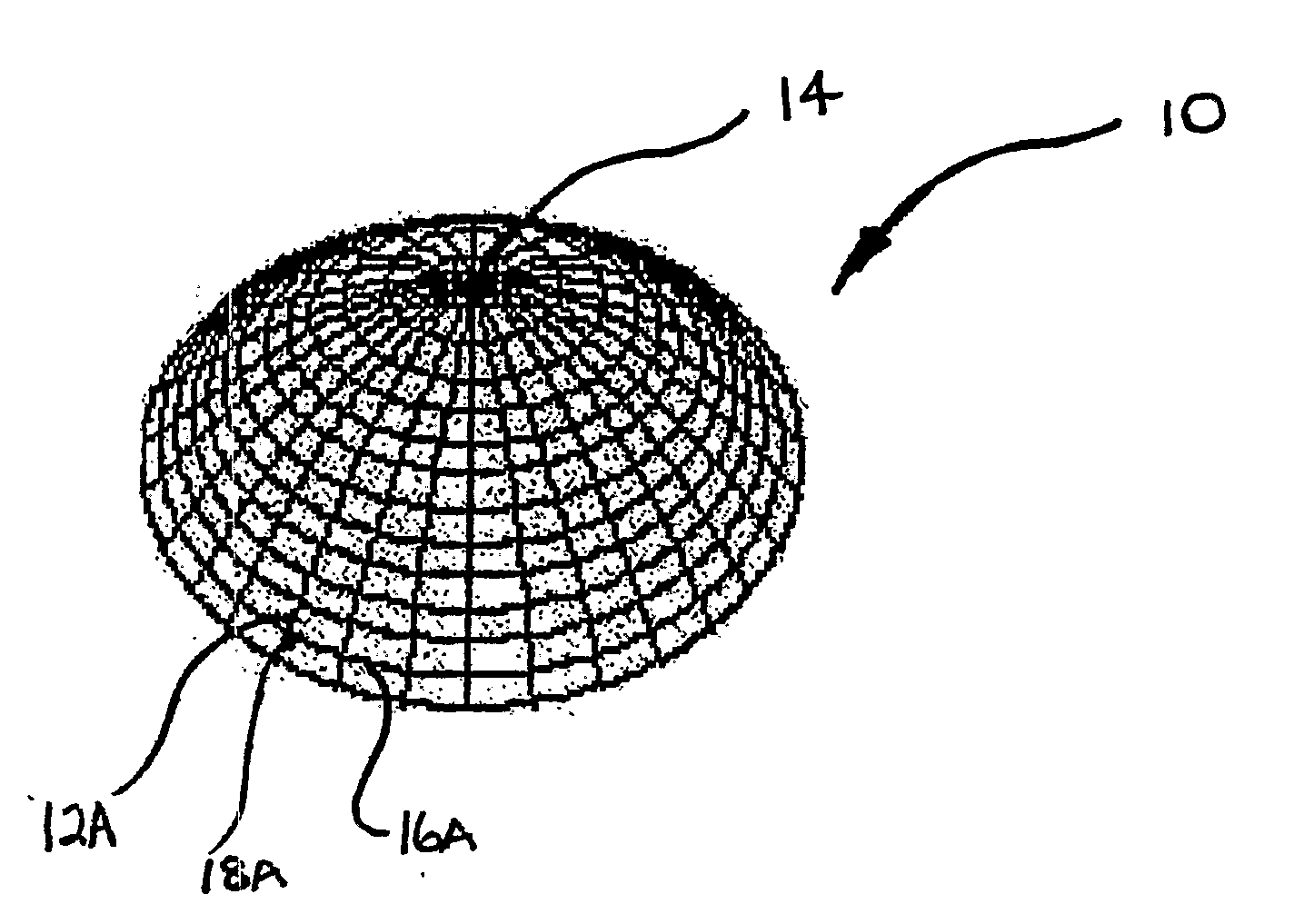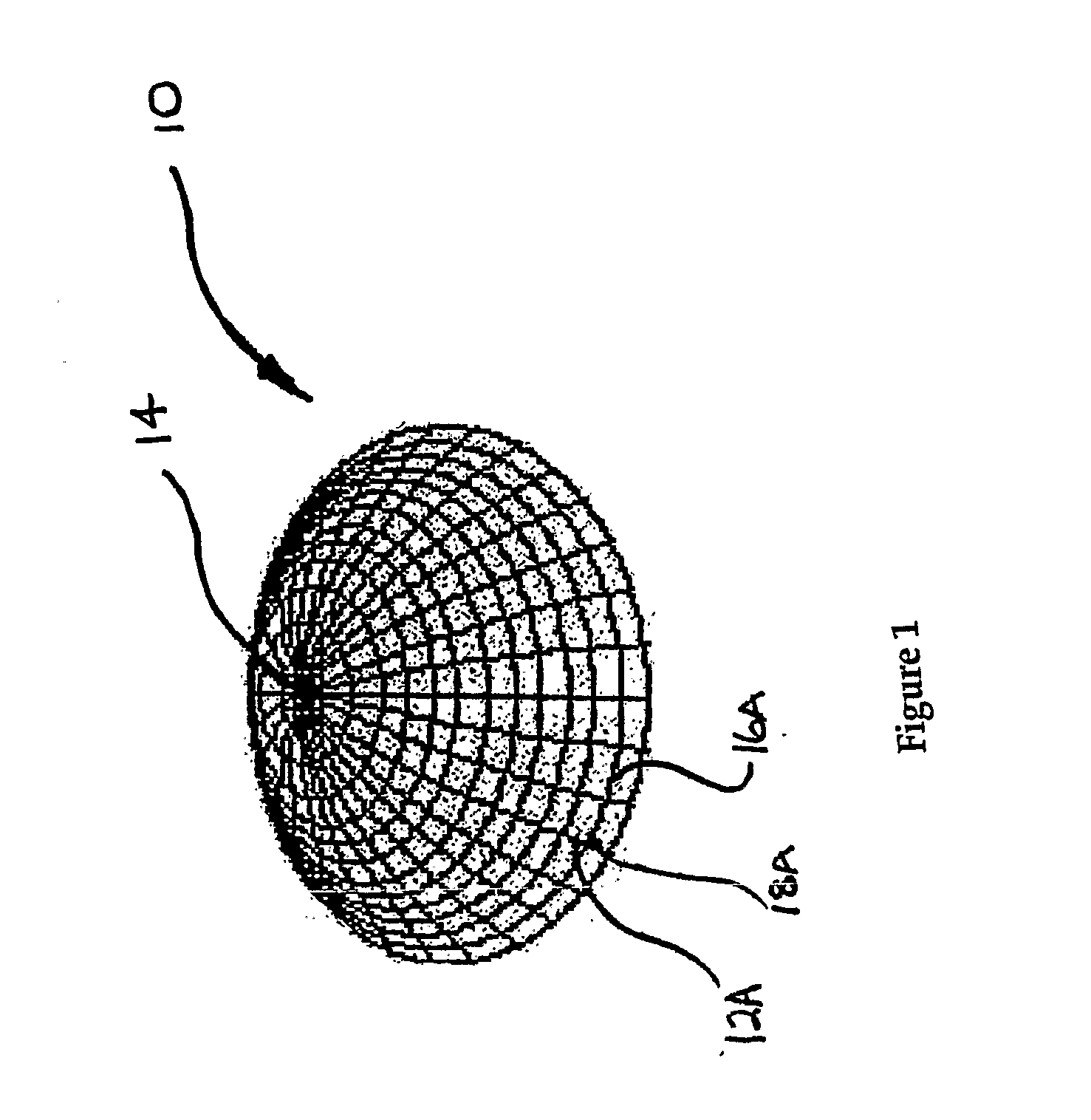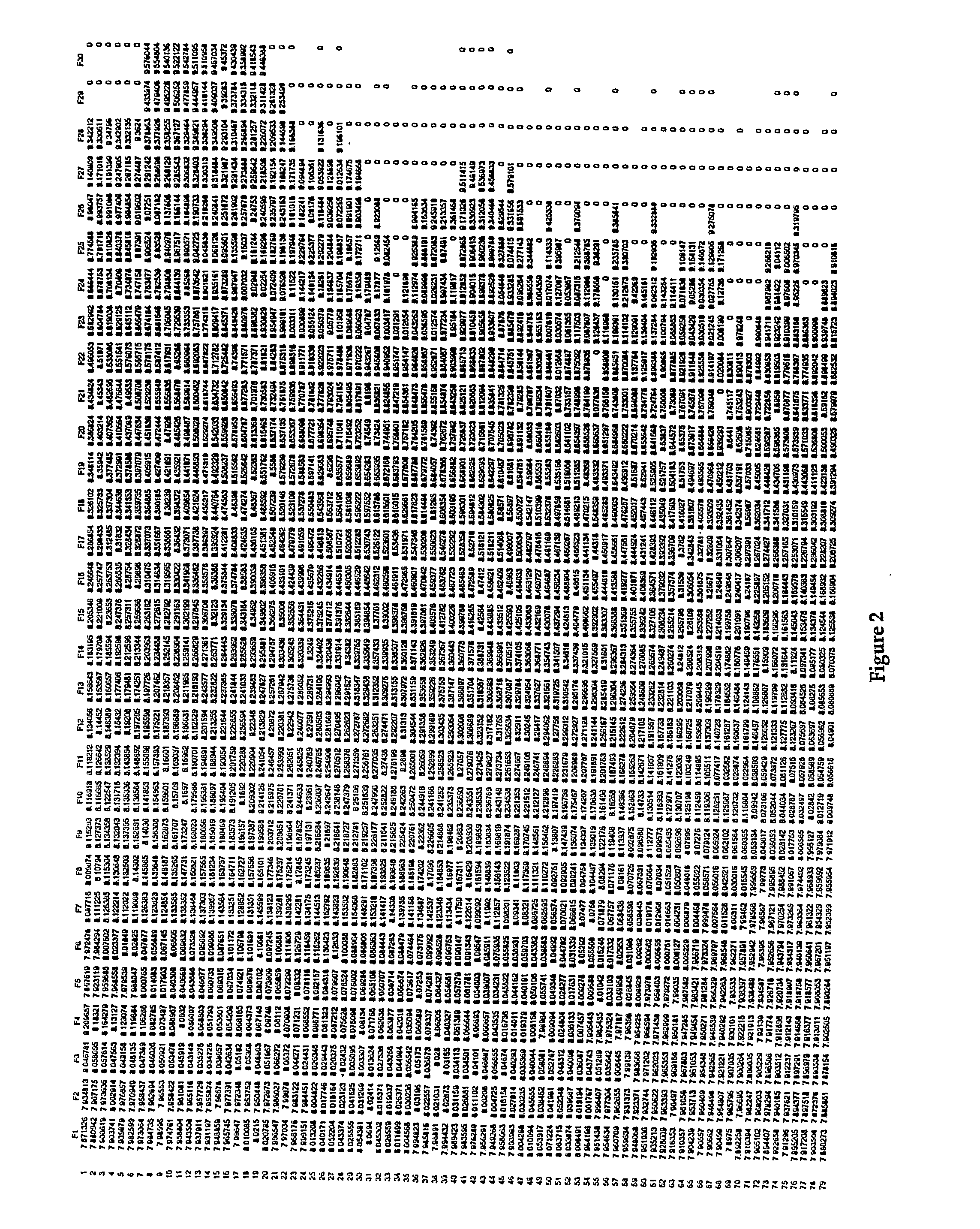Corneal Biometry Apparatus and Method
a biometric and apparatus technology, applied in the field of corneal topography for biometrics, can solve the problems of inability to accurately detect fingerprints, inability to use fingerprints,
- Summary
- Abstract
- Description
- Claims
- Application Information
AI Technical Summary
Benefits of technology
Problems solved by technology
Method used
Image
Examples
Embodiment Construction
[0039] In a preferred embodiment of one aspect of the invention there is provided a method for validating the identity of a person using corneal imaging techniques. The method involves capturing an image of a person's cornea and where as illustrated in FIG. 1 the cornea is divided into a grid or map 10. The cornea grid or map 10 includes a plurality of meridians such as 12A extending from a vertex 14 of the cornea and being angularly equally separated. The grid or map 10 also includes a plurality of concentric rings such as 16A which are equally spaced and circumferentially separated intersecting with the meridians such as 12A at a plurality of points such as 18A. This method of corneal reconstruction is based on the arc step method and utilises an infrared vertex detector (not shown).
[0040] In an alternate embodiment the cornea image is captured using laser technology taking a cross-section of the cornea utilizing a slit beam. This form of corneal topography is used in ophthalmolo...
PUM
 Login to View More
Login to View More Abstract
Description
Claims
Application Information
 Login to View More
Login to View More - R&D
- Intellectual Property
- Life Sciences
- Materials
- Tech Scout
- Unparalleled Data Quality
- Higher Quality Content
- 60% Fewer Hallucinations
Browse by: Latest US Patents, China's latest patents, Technical Efficacy Thesaurus, Application Domain, Technology Topic, Popular Technical Reports.
© 2025 PatSnap. All rights reserved.Legal|Privacy policy|Modern Slavery Act Transparency Statement|Sitemap|About US| Contact US: help@patsnap.com



